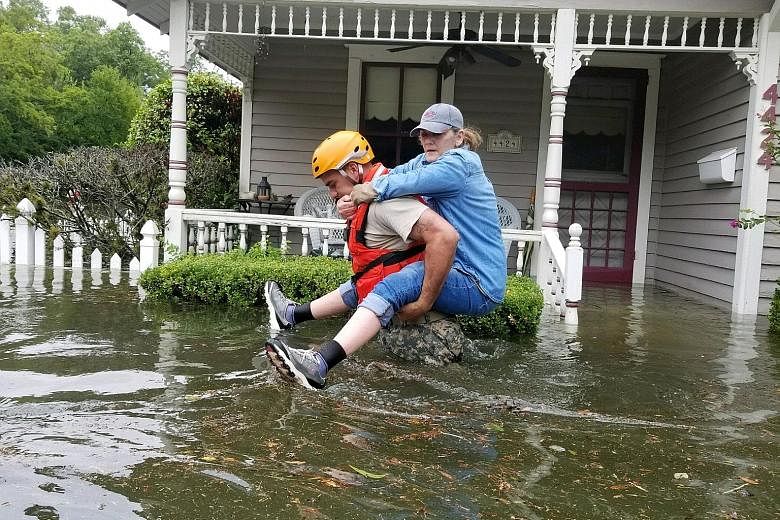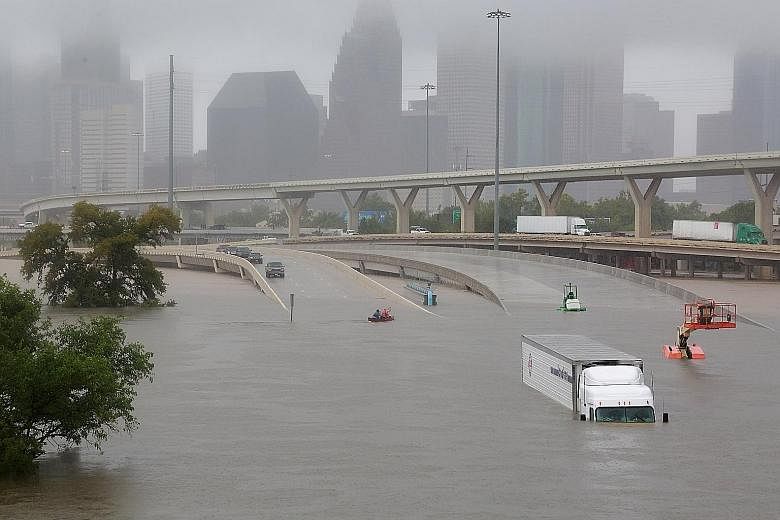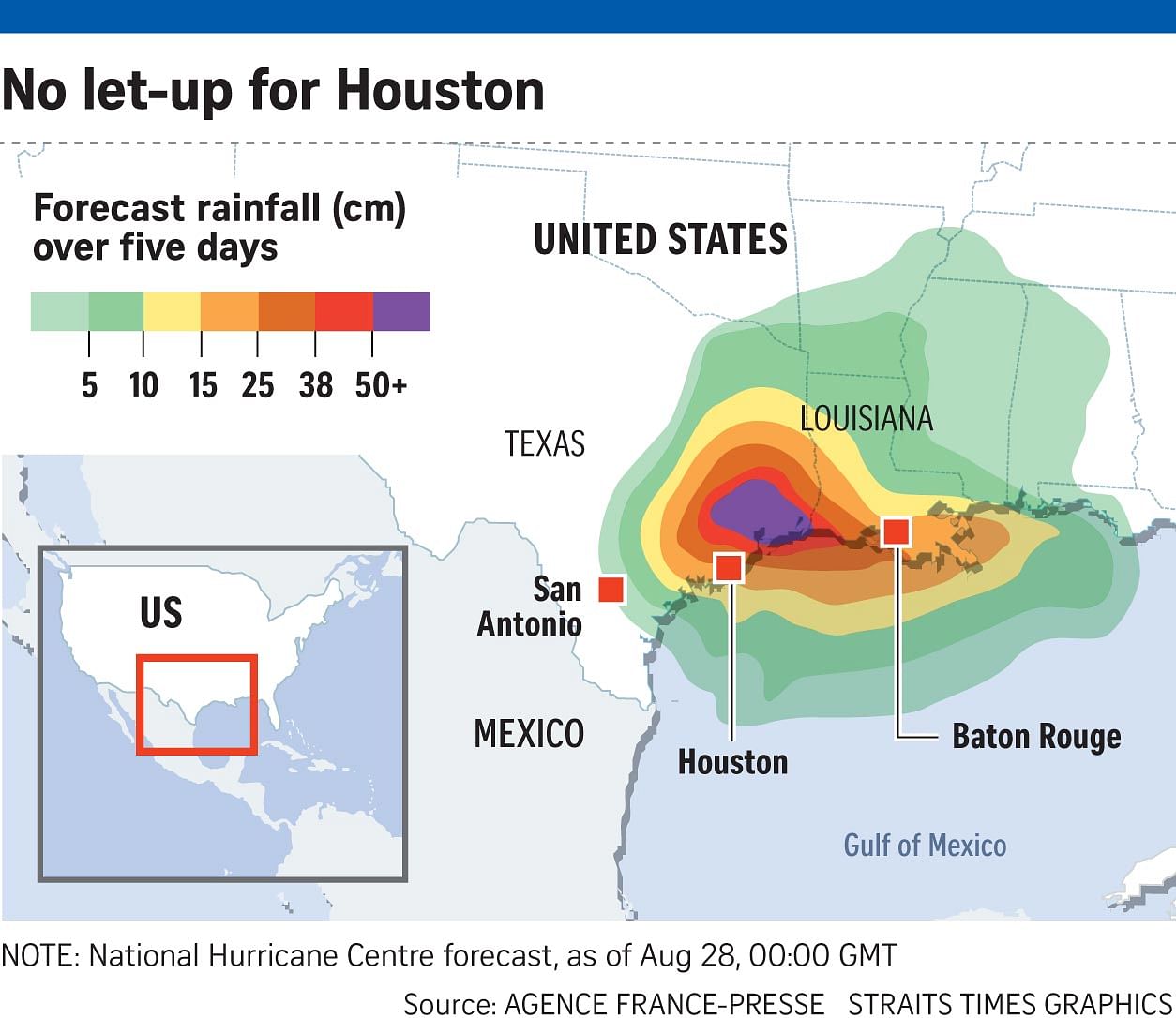WASHINGTON • United States President Donald Trump yesterday declared an emergency in Louisiana as rain from Tropical Storm Harvey spread to the state after historic flooding deepened the crisis in neighbouring Texas.
The declaration allows the federal government, specifically the Federal Emergency Management Agency (Fema), to coordinate relief efforts. It also provides federal funding for disaster relief for Louisiana, parts of which were devastated by Hurricane Katrina in 2005.
Harvey, the most powerful hurricane to strike Texas in more than 50 years, first hit land late last Friday and has killed at least five people. It has since lingered around Texas' Gulf Coast, where it is forecast to remain for several more days, drenching parts of the region with a year's worth of rain in the span of a week. The storm is forecast to move into Louisiana.
Schools, airports and office buildings in Houston, the nation's fourth-largest city, were ordered shut yesterday as scores of roads turned into rivers and chest-high water filled neighbourhoods in the low-lying city that is home to about 2.3 million people.
Houston's healthcare infrastructure struggled to treat storm victims, having become a victim itself. Water poured into hospitals, ambulances were caught up in roiling flood waters and medical transport helicopters were grounded by high winds.
The area's vital petrochemical industry was also disrupted, causing spot prices for petrol futures to surge 7 per cent at one point to a two-year high. Oil futures were flat to lower.
Houston is facing worsening flooding in the coming days as Harvey dumps more rain on the city, swelling rivers to record levels.
Torrential rain also hit areas more than 240km away, swelling rivers upstream and causing a surge that was heading towards the Houston area, where numerous rivers and streams already have been breached.
More flooding is expected as water levels continue to rise, putting more residents at risk. More than 30,000 people are expected to be placed temporarily in shelters, Fema administrator Brock Long told reporters.
The National Weather Service said the worst of floods are expected tomorrow and on Thursday, although there is still uncertainty over the storm's path.
Overall, Mr Long said more than 450,000 people in Texas were expected to seek disaster assistance due to flooding.
The authorities ordered over 50,000 people to leave parts of Fort Bend County, about 55km south- west of Houston, as the Brazos River was set to crest at a record- high 18m this week, 4.2m above its flood stage.
Harvey is expected to produce an additional 38cm to 63cm of rain until Friday in the upper Texas coast and into south-western Louisiana, the National Hurricane Centre said.
Mr Trump plans to go to Texas today to survey the storm damage.
Almost half of the US refining capacity is in the Gulf Coast region. Shutdowns extended across the coast, including ExxonMobil's Baytown refinery. More than 2.3 million barrels of capacity were offline as of yesterday morning, representing 13 per cent of daily US production. That loss of refining capacity pushed US petrol prices higher.
But crude oil futures headed lower late yesterday on an anticipated drop in demand because of refinery and oil-well closures.
Damages from Harvey are not likely to be as extensive as Katrina in 2005, which killed 1,800 people in and around New Orleans, or Sandy, which hit New York in 2012, said a spokesman for Hannover Re, one of the world's largest reinsurers. Those caused US$80 billion (S$108 billion) and US$36 billion in insured losses, respectively.
REUTERS, AGENCE FRANCE-PRESSE, NYTIMES



